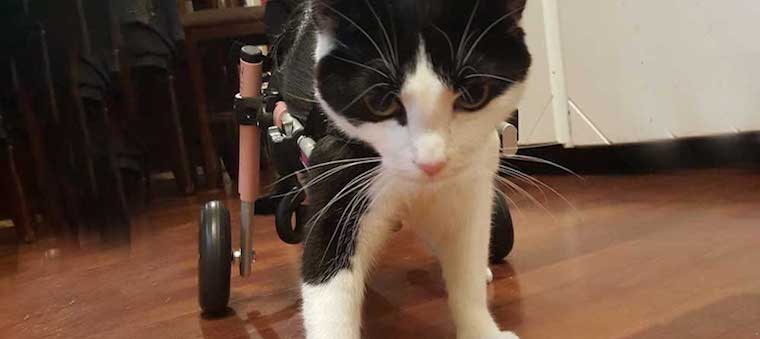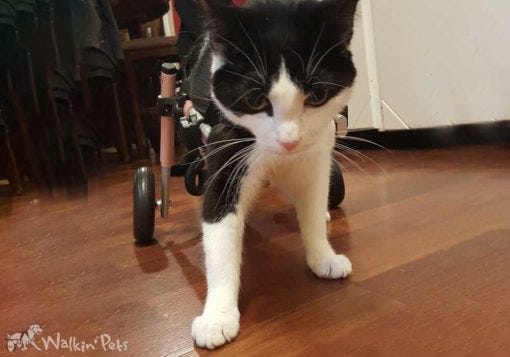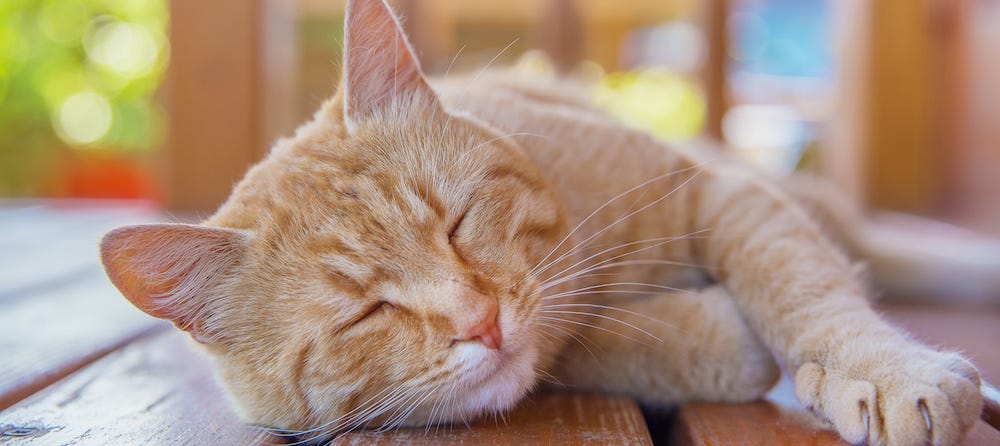Hundreds of miles away in Brazil, a sweet little kitty named Speedbump is preparing to be fitted for his first rear wheelchair after an accident that led to the amputation of his rear legs. As he waits to be fostered into a new home in the United States, it is clear that he is one among thousands of cats that have faced similar tragedies. The only difference is that not all of them will be given the opportunity to find a warm, friendly place to call home.
The reasoning for this is simple: Stigmas surrounding the adoption of disabled pets are very prevalent. According to the American Humane Association, between 5 to 8 million dogs and cats enter shelters every year. Of these, 3-4 million are euthanized. Unfortunately, disabled cats and dogs are often the last to get adopted.
The truth is, a disabled cat isn’t that different from an able-bodied cat. The disabled cat maintains the same playful nature, gentle demeanor, and zest for life. Countless cats like Speedbump, despite their calm and mild-mannered demeanor, have sprung to action upon being given a second chance. So, if you’re concerned that you won’t be able to handle the care and attention that goes into caring for a disabled cat, allow us to give you some advice.
1. Buy your cat a wheelchair
Inability to move or partake in regular activities is what most impacts a disabled cat. However, modern technology has given us the opportunity to fit him with front or rear wheelchairs, which restore his mobility. You may be thinking a wheelchair is not a viable way to lift his spirits. Believe us, he won’t know the difference! The beauty of cats (and all animals for that matter) is that they enjoy life with an eternal childlike curiosity and simplicity. They don’t care how they chase the mice, just as long as they are still able to do so!
2. Look into alternative medicines
The most difficult part for your disabled kitty (and you) will be dealing with any lingering pain or discomfort. When you think of this, your mind probably jumps to one thing: extraneous vet bills. However, the truth is that there are plenty of natural remedies for the treatment of pain related to disabilities in cats. These can include CBD oil, essential oils, and even acupuncture or physical therapy (particularly for issues like intervertebral disc disease, which often leads to loss of rear leg function).
3. Help out with a harness
In addition to wheelchairs, harnesses are also an excellent way to transport your furry friend. Fitting your disabled cat with a harness will allow you to pick him up more easily and comfortably, and help him up and across complex terrain (like stairs). This is a helpful tool, especially if your cat loves the outdoors.
4. Be patient
After a trauma, your disabled kitty may be fidgety and reluctant to try new things or socialize. In time, with the proper care and attention, he will adapt to you. The key is to remember that animals are not that different from humans: When something troubling happens, they need time to recover before they can reintegrate. You are part of the healing process, and he needs your support and patience more than anything.
5. Adapt your home
This doesn’t necessarily mean major remodeling—just minor modifications to make some of your cat’s daily activities easier and more accessible. You will want to elevate your cat’s feeding bowl so he doesn’t have to bend down too low to get food. If you have a lot of stairs, you may want to consider putting in some small ramps (this can absolutely be DIY, and doesn’t require you to spend too much money). Lastly, you may want to rearrange some of your furniture or remove any objects that could impede his path. Try to remove clutter and create wide, clear spaces for your cat to navigate the room. Clear any power cords or anything that could cause him to trip. Also, consider padding any sharp corners, as falls are likely to happen, and you won’t want to invoke any further injuries.
A Rewarding Decision
Although these tips should provide you with substantial knowledge in caring for a disabled cat, it will still be learning curve. Fortunately, it will be one that reaps rewards much greater than imagined. Perhaps you will have to devote some extra preparation for a disabled cat (finding the right-sized bed, picking out wheelchair-friendly toys, and accessorizing your litter box with a ramp), but you will learn lessons in patience, empathy, and altruism like never before. By getting a disabled cat, you not only add a vibrant and lovable member to your family, but you take a stand for animals everywhere that are simply in need of safety and compassion.
Guest post by Ellie Batchiyska of Handicapped Pets, your most trusted source for pet wheelchairs, harnesses, and back braces.










